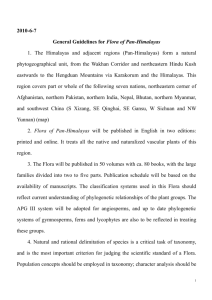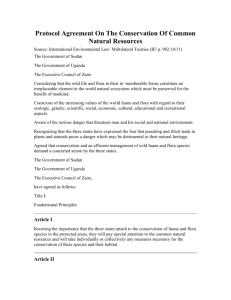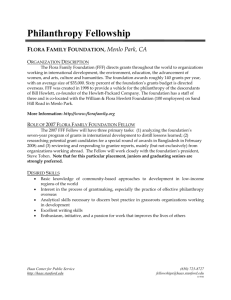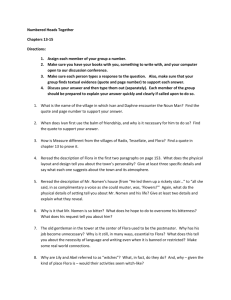Flora Brasiliensis revisited
advertisement
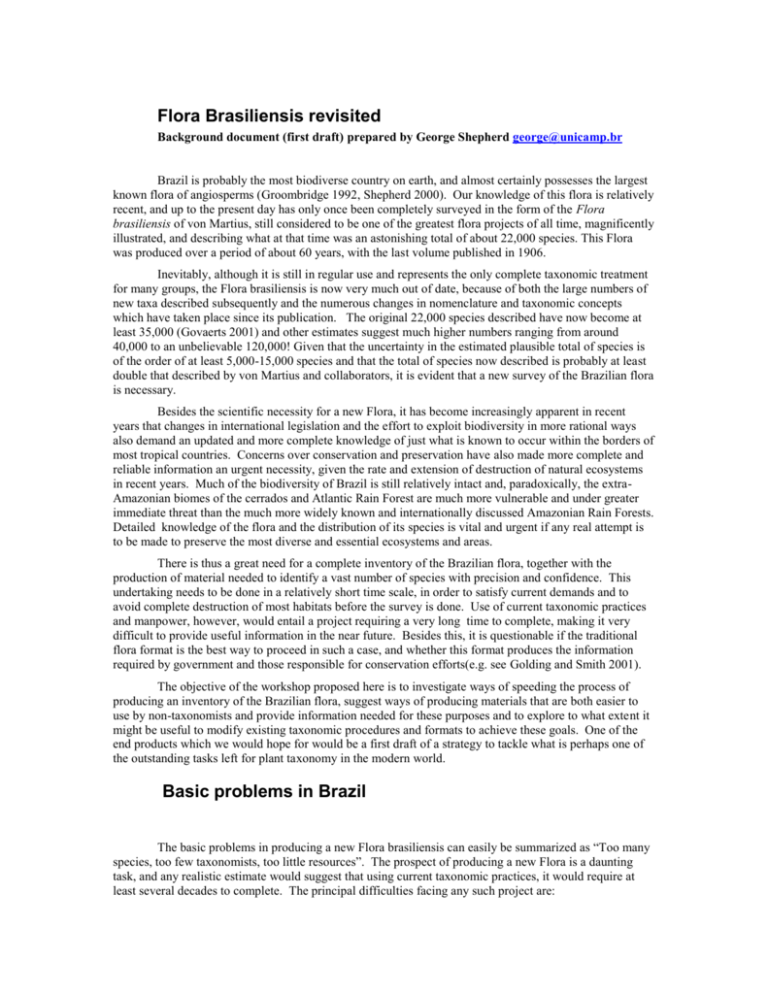
Flora Brasiliensis revisited Background document (first draft) prepared by George Shepherd george@unicamp.br Brazil is probably the most biodiverse country on earth, and almost certainly possesses the largest known flora of angiosperms (Groombridge 1992, Shepherd 2000). Our knowledge of this flora is relatively recent, and up to the present day has only once been completely surveyed in the form of the Flora brasiliensis of von Martius, still considered to be one of the greatest flora projects of all time, magnificently illustrated, and describing what at that time was an astonishing total of about 22,000 species. This Flora was produced over a period of about 60 years, with the last volume published in 1906. Inevitably, although it is still in regular use and represents the only complete taxonomic treatment for many groups, the Flora brasiliensis is now very much out of date, because of both the large numbers of new taxa described subsequently and the numerous changes in nomenclature and taxonomic concepts which have taken place since its publication. The original 22,000 species described have now become at least 35,000 (Govaerts 2001) and other estimates suggest much higher numbers ranging from around 40,000 to an unbelievable 120,000! Given that the uncertainty in the estimated plausible total of species is of the order of at least 5,000-15,000 species and that the total of species now described is probably at least double that described by von Martius and collaborators, it is evident that a new survey of the Brazilian flora is necessary. Besides the scientific necessity for a new Flora, it has become increasingly apparent in recent years that changes in international legislation and the effort to exploit biodiversity in more rational ways also demand an updated and more complete knowledge of just what is known to occur within the borders of most tropical countries. Concerns over conservation and preservation have also made more complete and reliable information an urgent necessity, given the rate and extension of destruction of natural ecosystems in recent years. Much of the biodiversity of Brazil is still relatively intact and, paradoxically, the extraAmazonian biomes of the cerrados and Atlantic Rain Forest are much more vulnerable and under greater immediate threat than the much more widely known and internationally discussed Amazonian Rain Forests. Detailed knowledge of the flora and the distribution of its species is vital and urgent if any real attempt is to be made to preserve the most diverse and essential ecosystems and areas. There is thus a great need for a complete inventory of the Brazilian flora, together with the production of material needed to identify a vast number of species with precision and confidence. This undertaking needs to be done in a relatively short time scale, in order to satisfy current demands and to avoid complete destruction of most habitats before the survey is done. Use of current taxonomic practices and manpower, however, would entail a project requiring a very long time to complete, making it very difficult to provide useful information in the near future. Besides this, it is questionable if the traditional flora format is the best way to proceed in such a case, and whether this format produces the information required by government and those responsible for conservation efforts(e.g. see Golding and Smith 2001). The objective of the workshop proposed here is to investigate ways of speeding the process of producing an inventory of the Brazilian flora, suggest ways of producing materials that are both easier to use by non-taxonomists and provide information needed for these purposes and to explore to what extent it might be useful to modify existing taxonomic procedures and formats to achieve these goals. One of the end products which we would hope for would be a first draft of a strategy to tackle what is perhaps one of the outstanding tasks left for plant taxonomy in the modern world. Basic problems in Brazil The basic problems in producing a new Flora brasiliensis can easily be summarized as “Too many species, too few taxonomists, too little resources”. The prospect of producing a new Flora is a daunting task, and any realistic estimate would suggest that using current taxonomic practices, it would require at least several decades to complete. The principal difficulties facing any such project are: diversity The sheer size, diversity, unsatisfactory taxonomy and geographical extent of Brazilian biodiversity make any complete Flora a major undertaking. The only comparable current Flora projects in number of species have estimated completion dates of decades (Flora Malesiana - 2050) or centuries (Flora Neotropica – 300 years, but this is not strictly comparable to a national Flora project) in the future (Heywood 2001). Much of this flora is poorly known taxonomically, requires taxonomic revision or monographic treatment and is known from very limited collections. In many cases, species are known from a single collection and have never been recollected and many new species are described every year, especially in under-collected areas such as the Amazonian basin and Atlantic Rain Forest. manpower The number of active, professionally trained plant taxonomists in Brazil has increased dramatically in the last few decades, and the country now has, perhaps for the first time in its history, a real prospect of having a significant capacity in an area traditionally dominated by European and North American researchers. In spite of this improvement, numbers are still very inadequate, and many of these researchers are seriously overloaded by teaching and bureaucratic duties, besides having inadequate working conditions. The geographical distribution of these researchers is very uneven, with a strong concentration in the SE and S, leaving the richest and least well-known areas with a crippling deficit of manpower. physical difficulties in collecting Although considerable improvements have been achieved in sampling density and coverage (Prance 2001, Shepherd 2000), much remains to be done, and considerable areas (mainly in Amazonia, but also in other parts of the country) are still seriously undercollected or totally uncollected. Many of the seriously undercollected areas are very remote and difficult to reach, even in relatively well-known regions such as South-eastern Brazil. information access One of the greatest difficulties facing taxonomists in Brazil is access to taxonomically useful or vital information. The major items required for thorough taxonomic treatments – types, older literature and specimen data to supplement locally available material are largely contained in European or North American institutions, making access difficult, costly and/or practically impossible for many taxonomists working in Brazil. training and expertise Although great strides have been made in training of researchers and students, there are still strong deficiencies, especially in areas related to informatics and more recent methods of analysis of taxonomic data. This is, in part, due to lack of resources for teaching of more advanced methods and, to some extent, lack of sufficiently and appropriately trained teachers and advisors. resources Although great strides have also been made in re-equipping some major institutions and some of the major teaching centres, there are still serious problems with equipment, suitable laboratories and buildings and working conditions. Many collections are housed in totally inadequate conditions and lack much of the regular maintenance (fumigation, etc.) so necessary for collections in tropical climates. Informatics resources are also very limited in many institutions, with Internet access often difficult or practically impossible. This means that solutions which involve informatics need to offer alternatives in the form of CD-ROMs and other alternatives to regular, high-speed Internet access. It should also be noted that maintenance of computing equipment and infrastructure is often very difficult in tropical conditions. References Golding, J.S. & Smith, P.P. 2001. a 13-point flora strategy to meet conservation challenges. Taxon 50: 475477. Govaerts, R. 2001. How many species of seed plants are there? Taxon 50: 1085-1090. Groombridge, B., (Ed. 1992. Global biodiversity: status of the Earth's living resources. London, Chapman & Hall. Heywood, V.H. 2001. Floristics and monography - an uncertain future ? Taxon 50: 361-380. Prance, G.T. 2001. Discovering the plant world. Taxon 50: 345-359. Shepherd, G.J. (2000). .
